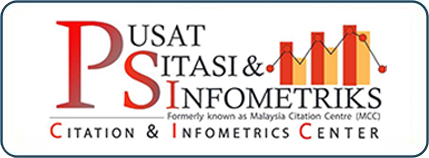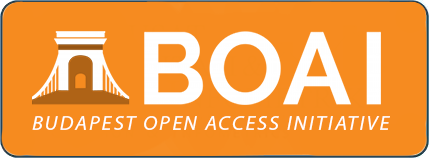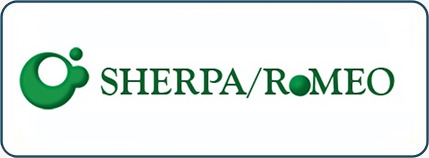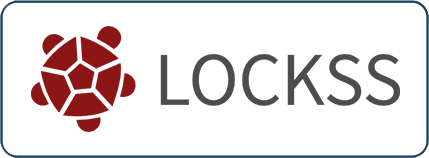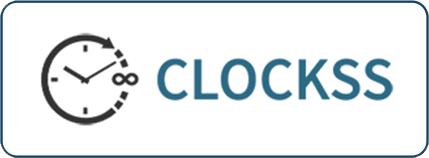The Importance Of Halalan Tayyiban In Food Consumption Among Adolescents: A Conceptual Analysis
Keywords:
Halal, Tayyib, Adolescent, Food, ConsumptionAbstract
In the last ten years, the field of halal has exploded from its roots in the Muslim way of life into the global mainstream, providing Muslims to become consumers with the mass production of cuisine, goods, and services. According to studies, the acceptance factors of halal foods among non-Muslim customers are correlated with the safety, nutritional value, and quality of halal foods. Even though halal and haram have been mentioned in the Quran, unfortunately, the idea of Halalan Tayyiban is still not well understood by Muslims generally. The food consumption trend among Malaysians is broad and expanding gradually since the existence of restaurants that served a variety of food is endless and excites Malaysian teenagers to try the food, especially food that went viral on social media. This paper aims to discuss in regards to the concept of halal and tayyib in food consumption as well as the benefits if adolescents consume it and the consequences if one’s compromises either one. This paper presents a qualitative research study that utilizes document analysis as the primary method for data collection. The finding shows that the food that a person consumes has a significant bearing on their physical health as well as their mental and spiritual well-being. Thus, it is vital for Muslims, adolescents especially, to ensure the food consumed are the food that is lawful and good to be eaten.
Downloads
References
Book
Amati, F. (2024). Every body should know this: The science of eating for a lifetime of health (from medical scientist and head nutritionist at ZOE). Random House.
Rose, A., & Jones, A. (2021). The pharmacological understandings of alcohol use and misuse. In D. Frings, & I. P. Albery (Eds.), The handbook of alcohol use: Understandings from synapse to society (pp. 107-140). Academic Press.
Conference & Proceeding
Fauzi, Y., & Khiral, A. (2015). Amalan pemakanan Rasulullah: Halal, jauhi syubhah, berkhasiat, dengan kadar yang sesuai. Proceedings of the International Conference on Islamic Civilization and Technology Management, 748-754.
Kamarulzaidi, M. A., Mohd Yusoff, M. Y. Z., & Hasan Adli, D. S. (2012). Saranan penggunaan madu oleh Al-Quran dan sokongan saintifik mengenai khasiatnya untuk memori. International Seminar on Al-Quran In Contemporary Society.
Journal
Ahmed, E. R., Yahya, S., Haron, H., & Mohamed, D. H. (2021). Operational definition for doubtful activities (shubuhat) based on Islamic finance perspective. Journal of Islamic Marketing, 12(5): 1025-1042.
Anshori, M. (2020). Makanan Haram dan Pengaruhnya dalam Kehidupan. Islamitsch Familierecht Journal, 1(01): 66-90.
Arif, B., Rahman, M. A., & Hossain, Md. Tareq. (2020). Factors influencing Muslim and non-Muslim consumers’ consumption behavior: A case study on Halal food. Journal of Food Service Business Research. 23(1): 1-26.
Biddinger, K. J., Emdin, C. A., Haas, M. E., Wang, M., Hindy, G., Ellinor, P. T., Kathiresan, S., Khera, A. V., & Aragam, K. G. (2022). Association of habitual alcohol intake with risk of cardiovascular disease. JAMA Network Open, 5(3): e223849.
Fadzlillah, N. A., Sukri, S. J. M., Othman, R., Rohman, A., & Shamsuddin, M. (2022). Concept and guideline of consuming Halal-Tayyiban food from Islamic and health perspective: a meaningful lesson from COVID-19 outbreak. International Journal of Asian Social Science, 12(5): 169-182.
Florence, M. D., Asbridge, M., & Veugellers, P. J. (2008). Diet Quality and Academic Performance. Journal of School Health, 78(4): 209-215.
Halipah, H., & Hanani Z. (2019). Pemakanan Dan Implikasinya Terhadap Pembangunan Insan: Satu Analisis Berdasarkan Kitab Fi Zilal Al-Quran. E-Jurnal Borneo Akademika, 3(2): 1-11.
Hamid, F., Maryam. A., Masumeh, S., & Gholam, H. (2014). Medicinal fruits in holy Quran. International Journal of Pediatrics, 2(3-2): 89-102.
Haque, A., Sarwar, A., Yasmin, F., Tarofder, A. K., & Hossain, M. A. (2015). Non-Muslim consumers’ perception toward purchasing halal food products in Malaysia. Journal of Islamic Marketing, 6(1): 133-147.
Hashim, K. E., Mohammad, N., & Kamis, M. S. (2022). The importance of understanding the concept of halalan tayyiban in food safety among Muslim students: A view from the Maqasid Shariah preserving of life. Journal of Management & Muamalah, 12(20): 1-11.
Hoque, M. (2023). Unveiling the silent threat: Food adulteration in Bangladesh. International Journal of Biological Innovations, 5(2): 22-27.
Jallad, N. A. 2008. The concepts of al-halal and al-haram in the Arab-Muslim culture: A translational and lexicographical study. Language Design: Journal of Theoretical and Experimental Linguistics, 10: 77-86.
Kamarulzaman, N. H., Tarmizi, H. A., & Misri, S. M. (2020). Generation Z’s awareness of eating at Halal certified restaurants. Malaysian Journal of Agricultural Economics, 29(1): 1-16.
Kolanowski, W., Ługowska, K., & Trafialek, J. (2022). The impact of physical activity at school on eating behaviour and leisure time of early adolescents. International Journal of Environmental Research and Public Health, 19(24): 16490.
Latif, I. A., Mohamed, Z., Sharifuddin, J., Abdullah, A. M., & Ismail, M. M. (2014). A comparative analysis of global halal certification requirements. Journal of Food Products Marketing, 20(sup1): 85-101.
Lubis, S. (2022). Makanan Halal dan makanan haram dalam perspektif fiqih Islam. Jurnal Ilmiah Al-Hadi, 7(2): 12-30.
Maclellan, D., Taylor, J., & Kyla, W. (2008). Food intake and academic performance among adolescents. Canadian Journal of Dietetic Practice and Research, 69(3): 141-144.
Mathew, V. N. (2014). Acceptance on halal food among non-Muslim consumers. Procedia-Social and Behavioral Sciences, 121: 262-271.
Musdja, M. Y. (2018). The risks of consuming Haram food from medical perspectives. Malaysia Journal of Consumer and Family Economics, 21(2): 1-12.
Muth, A. K., & Park, S. Q. (2021). The impact of dietary macronutrient intake on cognitive function and the brain. Clinical Nutrition, 40(6): 3999-4010.
Nafis, C. M. (2019). The Concept of Halal and Thayyib and Its Implementation in Indonesia. Journal of Halal Product and Research, 2(1): 1-5.
Paroi, S., Islam, A., Hasanat, MA., & Zohora, FT. (2020). Food habit of the adolescents in relation with sociodemographic variables in a selected high school in Khulna City. The Journal of GMC, 7(10): 38-43.
Reuter, P. R., Forster, B. L., & Brister, S. R. (2021). The influence of eating habits on the academic performance of university students. Journal of American College Health, 69(8): 921-927.
Salamon, H., Salbi, N., Rosman, A. S., Rosli, M. R., Mohd Noor, S. S., Nor Muhammad, N. H., Hamdan, M. N., Bashiron, B., & Hussin, E. R. (2021). Halalan Tayyiba: An Islamic perspective on healthy food. GEINTEC Magazine – Management, Innovation and Technologies, 11(2): 1001-1014.
Shafiee, N. F. (2017). Halalan toiyyiban food handling practices: A review on street food vendors in Malaysia. Journal of Islamic, Social, Economics and Development, 2: 385-394.
Sidek, S. A. (2015). Application of halalan tayyiban in the standard reference for determining Malaysian halal food. Journal of Asian Social Science, 11 (17): 116-129
Tahira, B., Habiba, U., & Saeed, Am. (2019). The relationship between students’ working memory capacity and mathematical performance at secondary school level. Bulletin of Education and Research, 41(3): 177-192.
Zaharudin, W. M., Sungit, F., Azizan, N. I., & Mutalib, S. A. (2022). Parameter halalan tayyiban dari perspektif maqasid al-syariah dalam produk makanan enzim. Journal of Muwafaqat, 5(2): 16-32.
Zulaekah, S., & Kusumawati, Y. (2005). Halal dan haram makanan dalam Islam. Publikasi Ilmiah Universitas Muhammadiyah Surakarta, 17(1): 25-35.
Thesis
Mohd Yasin, I. A. (2008). Amalan pemakanan di kalangan remaja di kawasan Felda Bukit Ramun, Kulai, Johor. Unpublished undergraduate project. Universiti Teknologi Malaysia.
Website
Awang, N. (2008). Amalan pemakanan nabi: Sihat dan berkhasiat. Institut Kefahaman Islam Malaysia. https://www.ikim.gov.my/index.php/2008/03/16/amalan-pemakanan-nabi-sihat-dan-berkhasiat/ (accessed on 28th February 2023)
Dinar Standard. (2020). State of the global Islamic economy report 2020/2021: Thriving in uncertainty. https://www.dinarstandard.com/post/state-of-the-global-islamic-economy-report-2020-2021(accessed on 28th February 2023)
Ismail, M. (2014). Agama: Makanan pengaruhi sikap kehidupan. Berita Harian Online. https://www.bharian.com.my/taxonomy/term/61/2014/12/21019/agamamakanan-pengaruhi-sikap-kehidupan (accessed on 3rd March 2023)
Kaur, M. (2022). Remaja malaysia ada tabiat plemakanan buruk, kurang libat aktiviti fizikal. Majoriti. https://majoriti.com.my/relaks/2022/03/07/remaja-malaysia-ada-tabiat-pemakanan-buruk-kurang-libat-aktiviti-fizikal (accessed on 3rd March 2023)
Ng, E. (2020). Alcohol consumption in Malaysia. Andatech. https://www.andatech.com.my/blogs/news/drug-and-alcohol-consumption-in-malaysia (accessed 3rd March 2023)
Stanford Medicine. (n.d). Healthy eating during adolescence. Stanford Medicine. https://www.stanfordchildrens.org/en/topic/default?id=healthy-eating-during-adolescence-90-P01610 (accessed on 28th February 2023)
Wood, L. (2022). Global Halal Food Market Report 2022: A $3,907.7 billion industry by 2027 - flourishing e-commerce industry has facilitated consumers with easy accessibility. GlobalNewsWire. https://www.globenewswire.com/en/news-release/2022/05/03/2434418/28124/en/Global-Halal-Food-Market-Report-2022-A-3-907-7-Billion-Industry-by-2027-Flourishing-e-Commerce-Industry-has-Facilitated-Consumers-with-Easy-Accessibility.html (accessed 19th January 2023)
Downloads
Published
How to Cite
Issue
Section
License
Copyright (c) 2024 Fatin Nadhirah Anuar, Mohd Nor Mamat, Mohd Amzari Tumiran

This work is licensed under a Creative Commons Attribution 4.0 International License.


